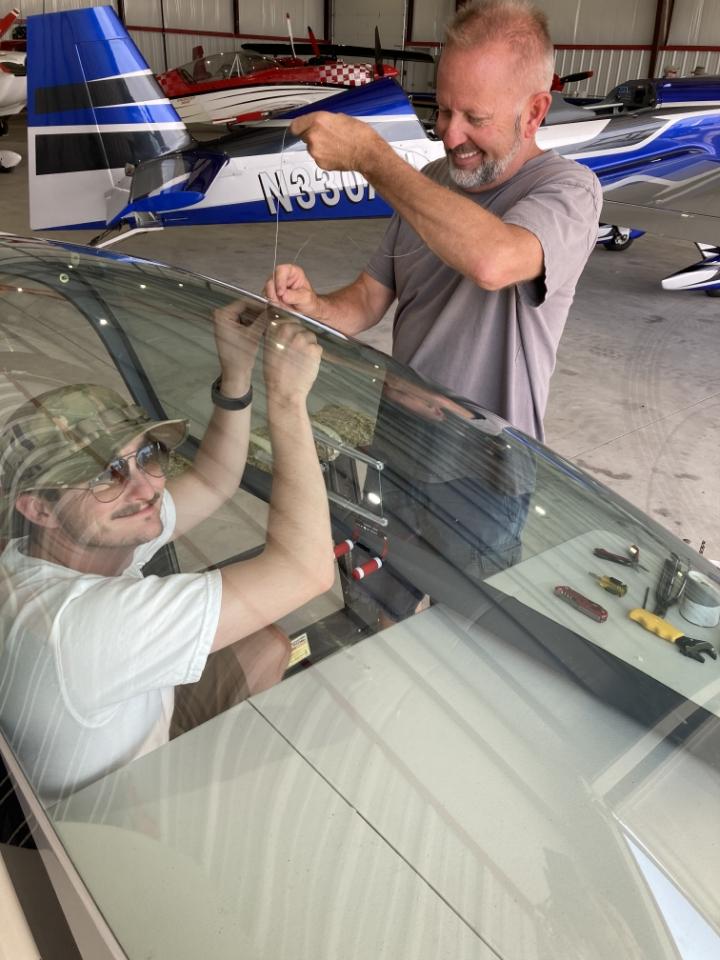A quick (temporary) fix for a cracked canopy


By DJ Molny, IAC 25097
So, here is a thing that happened this weekend. The canopy of the Extra 330LX cracked. And I mean CRACKED, from the corner of the vent window almost to the top of the canopy.
What to do? Safety wire! Covered with some Gorilla Tape and a couple of AN bolts and washers to hold it all together. All engineered by our resident A&P/Tech Inspector/Fixit guy, Jamie Treat. (picture right are Austin Belleau under the canopy and Jamie Treat working it from the outside.)
We are not really sure how it happened, but those vent windows are problematic; cracks often form at the corners, or sometimes where the sliding window tracks screw into the plexiglass. This one was a doozy.
Observations from Kramer Upchurch; "Here at Southeast Aero we repair 5 or 6 broken canopies annually. Most result from handling mishaps on the ground, from pilot head contact during hard acro, or failure to properly latch, but occasionally we don’t know the cause.
Cracks typically involve the rectangular vent cutout, which is a weak point in the bubble structure. We advise people to avoid contact with the edges of the cutout when reaching for the handles, and to never hold or lift the canopy by the cutout or window rails. Also, if overtightened the rail screws will start cracks. The proper tightness is to just snug them, then back out 1/8 turn, just enough to hold the rails stable. We use a drop of clear RTV on the threads to keep the screws in place.
Acro flight should not be conducted with temporary canopy repairs, but I have seen well-done, permanent repairs using overlay patches and plexiglass adhesive. A new canopy is almost never needed, and here at Southeast Aero we can replace a bubble with a factory part, using an approved procedure and materials as long as the frame is not badly damaged. Depending on workload it can take 2-3 weeks to complete. The procedure is outlined in the Service Manual so we can also supply the parts if the owner prefers another solution."

a. the user has determined that it is appropriate to the product being repaired;
b. it is directly applicable to the repair being made; and
c. it is not contrary to manufacturer's data.

